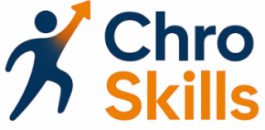
Understanding the Role of a CHRO
Comprehending the CHRO's Strategic Influence
To fully appreciate the skills required of a Chief Human Resources Officer (CHRO), one must first understand the expansive role they play within an organization. The CHRO is at the helm of the human resources department, charged with leading everything from employee training and development to spearheading strategic HR initiatives that bolster organizational growth.
Modern CHROs are tasked with cultivating a dynamic learning environment that nurtures the professional growth of employees. This involves designing and implementing effective training programs that integrate various learning modalities, such as instructor-led training, online courses, and blended learning approaches. The goal is to ensure that training programs are not only diverse in their modalities but also tailored to meet the specific needs of the organization and its employees.
The CHRO's scope extends beyond traditional HR functions; they are integral in shaping a continuous learning culture through innovative training methods. As organizations evolve, CHROs must employ a range of interactive and real-time training techniques. This includes leveraging virtual reality for immersive learning experiences and utilizing case studies to provide learners with practical, real-world scenarios that enhance problem-solving skills.
The responsibility of a CHRO is broad and encompasses the strategic implementation of courses and training modalities that are responsive to the latest industry developments. Their influence ensures that the organization remains competitive while fostering a workplace environment conducive to learning and development for both individuals and the collective workforce. Through such initiatives, CHROs play a crucial role in maintaining an organization’s long-term success.
For those interested in exploring the essential skills required for a CHRO, further insights can be found at Mastering the Art of Scaling School: Essential Skills for a Chief Human Resources Officer.
Key Skills for Modern CHROs
Essential Competencies for Today's CHROs
In the ever-evolving landscape of human resources, the role of a Chief Human Resources Officer (CHRO) demands a diverse set of skills that align with both traditional and modern practices. As organizations face new challenges, the CHRO must be equipped with a blend of strategic and operational capabilities.
Here are some key skills essential for modern CHROs:
- Strategic Vision: A CHRO must possess the ability to align HR strategies with the overall business goals. This involves understanding the essence of operational awareness and driving initiatives that support organizational objectives.
- Leadership and Influence: Effective leadership is crucial, as CHROs need to inspire and guide HR teams while influencing the broader organization. This includes fostering a culture of continuous learning and development.
- Data-Driven Decision Making: In today's data-rich environment, CHROs must be adept at utilizing analytics to inform HR strategies and decisions. This skill is vital for identifying trends and implementing evidence-based training programs.
- Change Management: As organizations undergo transformations, CHROs play a pivotal role in managing change. They need to ensure smooth transitions and adapt training modalities to meet evolving needs.
- Technological Proficiency: With the rise of online learning and virtual reality, CHROs should be comfortable with digital tools and platforms. This includes overseeing the integration of eLearning courses and interactive learning activities into the training program.
- Communication Skills: Clear and effective communication is essential for engaging with diverse stakeholders. CHROs must articulate HR policies and training objectives clearly to ensure alignment across the organization.
To master these competencies, CHROs often engage in a mix of traditional and innovative training approaches. Whether through instructor-led sessions, online courses, or blended learning environments, the focus remains on equipping HR leaders with the necessary skills to thrive in their roles. For a deeper dive into mastering these competencies, explore the art of organizational design.
Traditional Training Modalities
The Evolution of Learning Modalities
As organizations continually seek to enhance the effectiveness of their workforce, traditional training methods have evolved significantly. Training modalities now incorporate various established approaches that cater to diverse learner needs and preferences. While the fundamentals of these modalities remain instructive, contemporary practices are expanding their impact. Traditional methods, such as instructor-led training and face-to-face classroom sessions, continue to provide essential benefits. Instructor-led training offers a structured learning environment where learners can engage in real-time interactions with facilitators, fostering clarity and immediate feedback. This form of teaching is particularly effective for complex topics requiring in-depth explanation and personalized guidance. Classroom-based learning still holds its ground as a modality that supports team dynamics and peer learning. In this setting, learners participate in interactive activities, group discussions, and case studies that promote collaboration and critical thinking. Despite the enduring importance of these traditional techniques, advancements in technology have prompted organizations to integrate blended learning approaches. This synergy of traditional and digital methods enables a more flexible learning environment. Online training programs and eLearning courses extend learning opportunities beyond physical classrooms, allowing for self-paced learning and accessibility. Moreover, virtual reality is making inroads into training programs, offering immersive experiences that simulate real-world scenarios. Learners are able to practice skills in a controlled virtual space, gaining hands-on experience without the physical limitations of a traditional setup. For more insights into bridging the skills gap with effective training modalities, explore Bridging the Skills Gap: Essential Competencies for Chief Human Resources Officers.Innovative Training Approaches
Innovative Approaches to CHRO Training
In today's rapidly changing business landscape, traditional training methods can no longer stand alone. Organizations are embracing innovative approaches that cater to the evolving needs of Chief Human Resources Officers (CHROs). Here, we delve into modern training modalities that are shaping the future of CHRO development.
Blended Learning is at the forefront of contemporary training strategies. This approach combines the benefits of classroom sessions with the flexibility of online courses, creating a harmonious learning environment. CHROs can benefit from a learning modality that supports both real-time interactions with instructors and self-paced online training. This mix allows learners to apply theory through interactive activities, fostering a deeper understanding of knowledge-based skills in a practical context.
The adoption of Virtual Reality (VR) in employee training has revolutionized how skills are honed. This immersive technology places CHROs in simulated real-world situations where they can practice decision-making and leadership skills without real-world consequences. The virtual space allows for an interactive engagement that traditional training sessions might lack, making it a powerful tool in the training program arsenal.
Online Training Programs are evolving to become more dynamic and tailored. With the rise of platforms that offer instructor-led courses in an online format, CHROs have access to extensive resources without the constraints of geographical and time limitations. Course content is meticulously designed to cover the vast spectrum of skills required for modern human resources leadership, facilitating a comprehensive learning experience.
Moreover, case studies and real-time projects are invaluable in bridging the gap between theory and practice. These learning activities allow CHROs to implement new strategies and skills in controlled, yet realistic scenarios. Engaging in such exercises not only enhances skills but also builds confidence in practical application.
In essence, the shift towards innovative training approaches ensures that CHROs are well-equipped to adapt to the demands of contemporary HR challenges. By leveraging these advanced training modalities, organizations can rest assured that their HR leaders are prepared to drive strategic initiatives successfully.
Tailoring Training to Organizational Needs
Adapting Training Initiatives to Meet Corporate Demands
In the rapidly evolving business environment, tailoring training initiatives to suit individual organizational needs is essential for ensuring that CHROs are equipped with pertinent skills. Understanding the unique goals and culture of an organization can enhance the efficacy of training programs, as it aligns learning objectives with strategic business outcomes. A customized approach, therefore, is invaluable. Organizations have various options to tailor their training programs effectively. Utilizing blended learning environments that incorporate both online and in-person sessions can offer the flexibility needed to accommodate diverse learning modalities. Online courses and interactive eLearning platforms allow learners to engage with content at their own pace, while instructor-led training, whether virtual or in the classroom, provides the opportunity for real-time discussion and immediate feedback. To further customize these programs, businesses can assess their core objectives and the specific skill gaps within their HR teams. For instance, some organizations may benefit from virtual reality simulations to provide experiential learning, while others might find that case studies or problem-based learning activities are more beneficial in nurturing strategic thinking skills. Moreover, to cater to immediate training needs, content can be modular and adaptive, responding to real-time feedback from participants. This approach not only ensures relevance but also keeps the learners engaged and motivated throughout the course. By facilitating a learning environment that integrates various training modalities, employee training efforts can be optimized to yield long-term benefits. In this way, CHROs can drive learning initiatives that not only meet current skills-based requirements but also strategically prepare the HR function to support the organization’s future endeavors.Evaluating Training Effectiveness
Measuring the Impact of Learning Activities
Effectively evaluating the impact of training programs for Chief Human Resources Officers is crucial in ensuring that the skills acquired align with both the evolving role and the organization's goals. It's important to assess the value add of both traditional and modern training modalities to enhance the learning experiences for potential and current CHROs. One practical approach is employing a combination of quantitative and qualitative assessment methods. This not only gauges the immediate response from learners participating in online courses and classroom sessions but also identifies long-term skills application in real-time scenarios.- Feedback Mechanisms: Implement online surveys and virtual feedback sessions as immediate-response indicators post-training, allowing learners to voice areas of clarity and confusion. This insight helps tailor further programs to their needs.
- Knowledge Assessments: Engage learners with pre-and post-training assessments. By comparing results, organizations can measure knowledge retention and concept comprehension across different learning modalities.
- Case Studies and Scenario Analyses: Incorporate real-life case studies within the training courses to challenge learners in applying theoretical skills to practical situations. Observing these interactions provides insights into the training's effectiveness in real-world applications.
- Performance Metrics: Track performance improvements over time by overseeing how newly acquired knowledge influences organizational processes. Key performance indicators (KPIs) in HR functions can highlight shifts towards more efficient practices.













